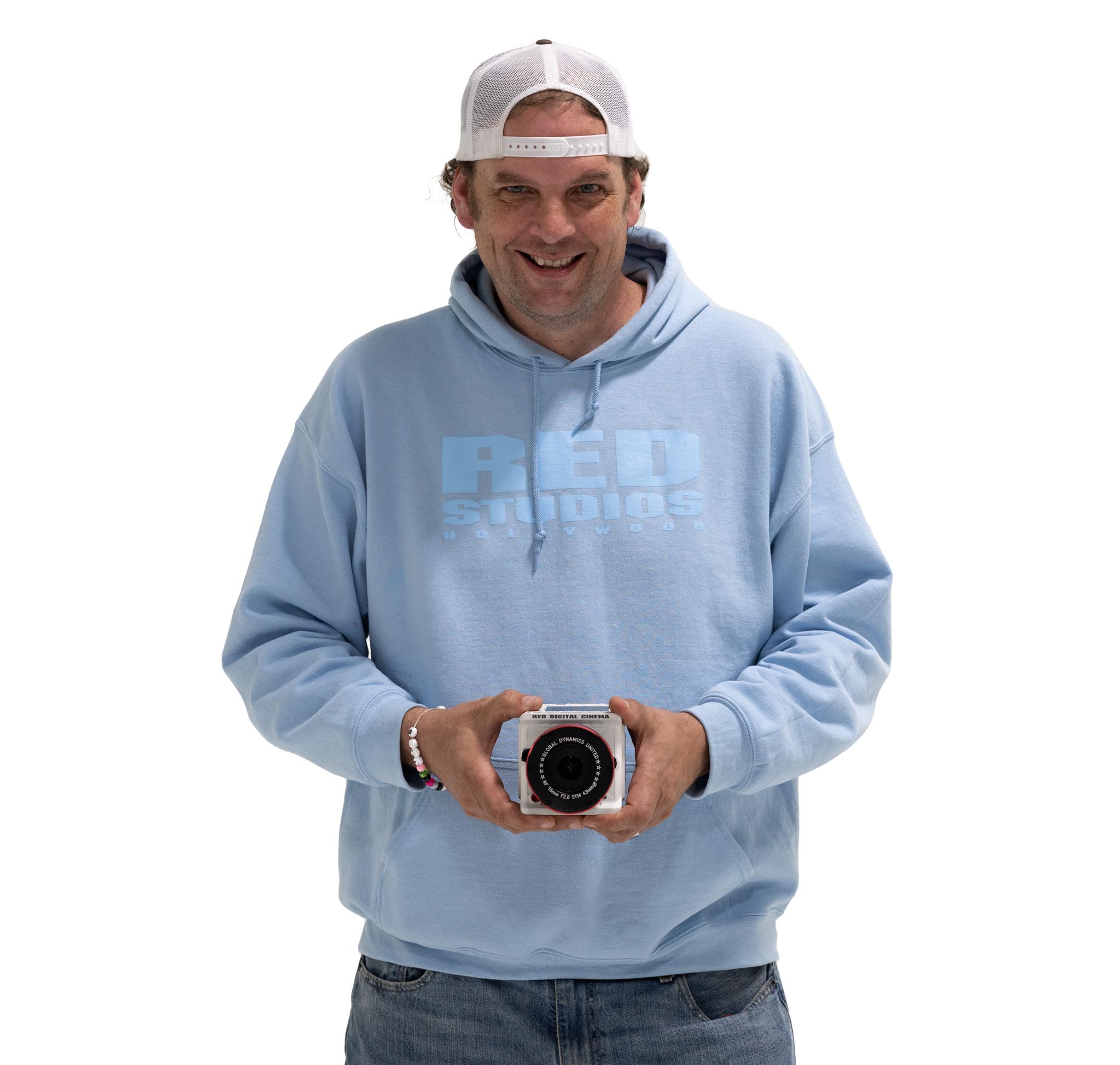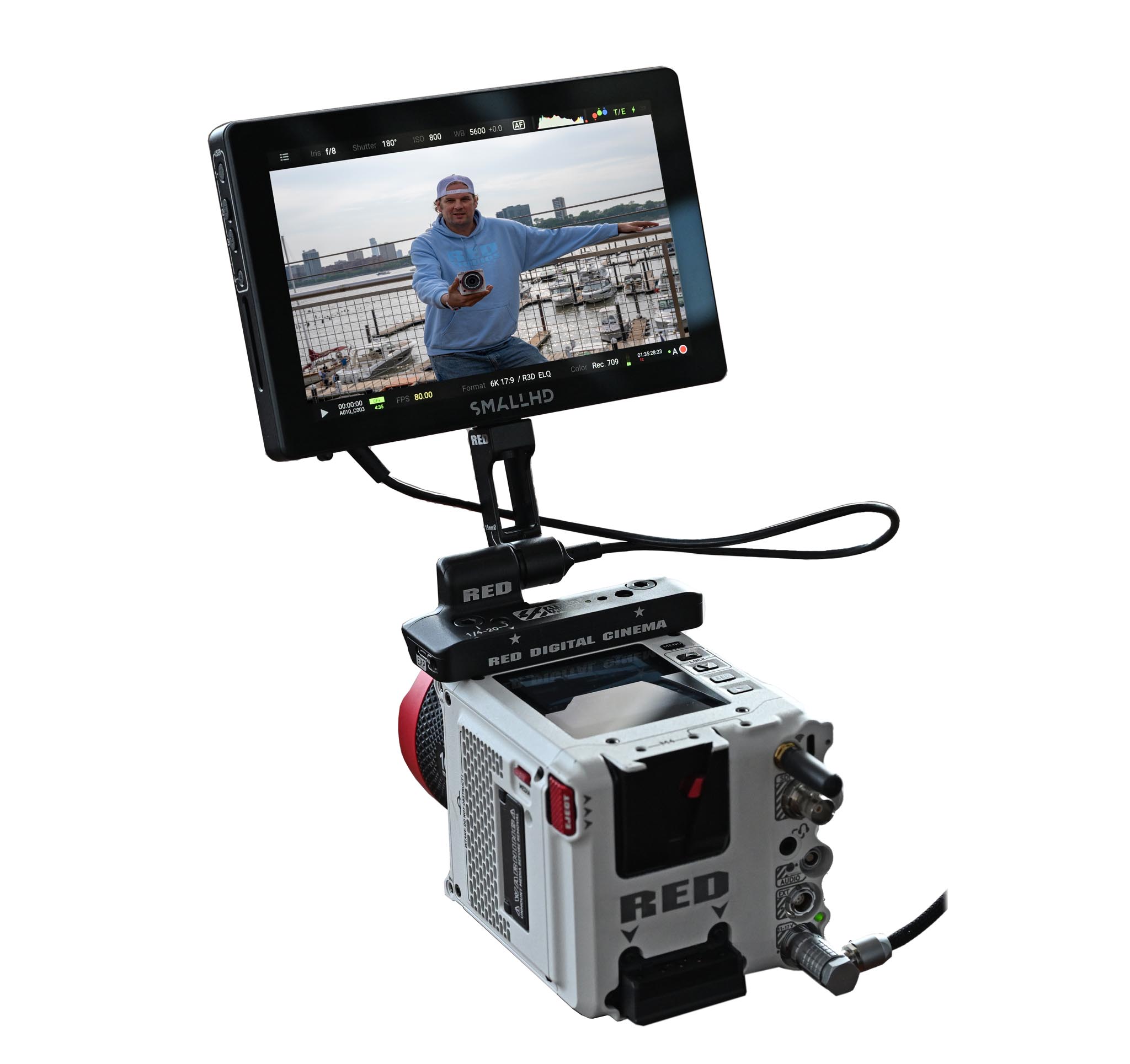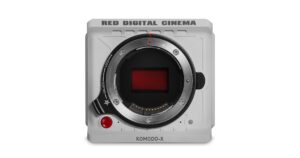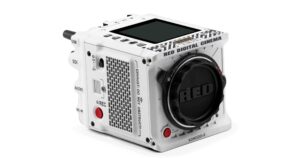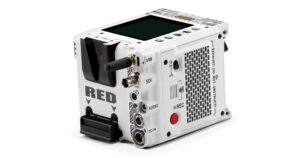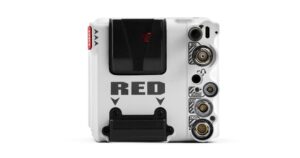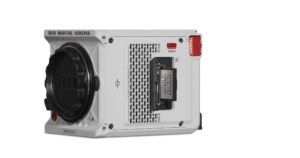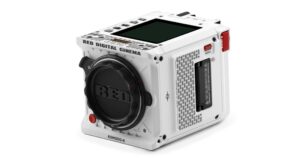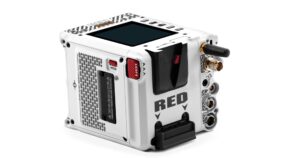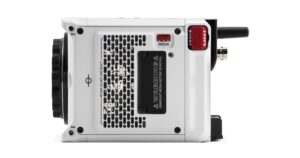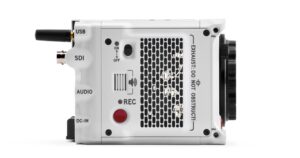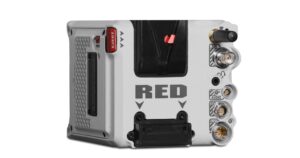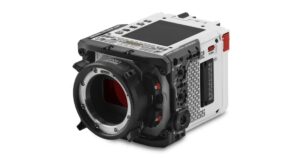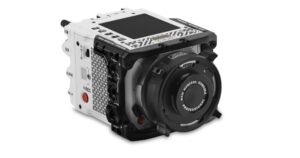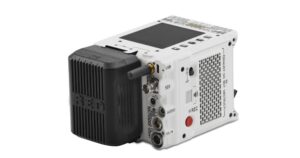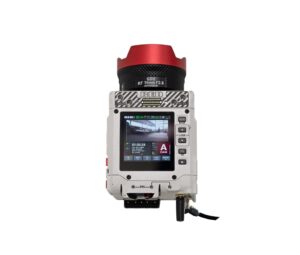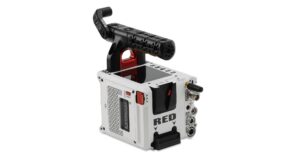 Flying In
Flying In
The last time we saw Jarred Land holding the KOMODO for FDTimes was in a cover photo that just happened to be taken by Brad Pitt in Los Angeles.
This time, Jarred is holding the new KOMODO-X in the trendy fashion film and photo stages at Pier 59 in New York, this time taken by me. Sorry Brad, I got the scoop this time.
The night before, a stream of texts scrolled by as Jarred, RED’s president and Co-Owner, was hand-carrying a still-unannounced camera model, flying into JFK from LAX, which was seriously delayed.
He was enroute to New York to check in with Henry Braham BSC and part of his camera team about their recent film Guardians of the Galaxy Vol. 3.
It’s encouraging when the head of a company takes the initiative and enjoys spending so much time listening to customers, DPs, ACs, Directors, Producers and other crew, something that Jarred seems to spend the majority of his time doing.
The interview was last minute. As I have come to expect, a barrage of Jarred’s text messages flew in as we tried to work out an opportunity to connect. Jarred’s side of the messaging went like this:
• I think I’m in NY for 24 hours.
• Do you have time to meet?
• I have a new camera with me which would be great for you to see.
• On tarmac at LAX forever.
• Finally ready to take off to JFK.
• Can I send you specs and stuff once they are done today ?
• Still working on it from 30,000 ft.
• This is a rough draft.
• Data is good.
• Landed JFK.
• What’s your late afternoon like?
• Let’s meet at Pier 59, in Studio 1.
• It should have good light for photos.
• Me holding the camera again?
• I probably won’t be great in front of your camera but this new KOMODO-X camera is very pretty.
• Sorry, side trip to B&H Photo, done and heading over now.
• OK, see you in an hour.
The Interview
Jon Fauer: What’s the back story behind this new camera sitting in front of us?
Jarred Land: This is the KOMODO-X. It’s our new camera that fills in the space between the KOMODO and the RAPTOR
A modern Eyemo, an advanced professional style GoPro?
The original KOMODO was designed as a crash camera, a camera as small as possible with most everything that wasn’t absolutely necessary stripped away for shooting action sequences. An incredibly capable “utility camera,” as Phil Holland coined it, a camera born from a lot of requests from Cinematographers and Directors for something better than a GoPro, but still with a Super35 sized sensor and proper image quality. Those little action cams were incredibly convenient but often limited to less than a second in a movie before the audience would notice the quality difference and wonder, “Hey, what’s going on?”
We were working on a global shutter sensor that fits this request ideally, because certainly you want a global shutter for fast movement or explosions, fire, flashes, strobes and even fight sequences with handheld work. So that was the genesis of the original KOMODO camera. We released it and everybody who was shooting those type of scenes loved it—a small camera, with long battery life and it did what they needed it to do extremely well.
What we didn’t anticipate was a whole other community of filmmakers who adopted the KOMODO—mostly for its low price point and incredible image. Because of this, some people used it not as a “C,” “D,” “E” or “F” camera, but as their “A” or “B” camera, which we didn’t really expect.
Unfortunately, using the KOMODO as an “A” camera wasn’t the easiest because, as a crash camera, it didn’t have a lot of the things an “A” camera would. Its audio was basic, the monitoring options were limited and so were the types and amounts of ports, etc. It was great because the entire third-party accessory industry got working to making things to resolve this, but it was clear to us that as much as people loved the KOMODO, there was a strong desire for something a bit bigger with a bit more capability to sit between the little crash cam and its big brother, the RAPTOR.
We call the new camera KOMODO-X and it’s not a KOMODO 2. It’s not a replacement for the original KOMODO, which is still best for what it was designed to do as a crash cam. This new camera fills in a lot of the holes for those filmmakers. KOMODO-X gives you twice the frame rates of KOMODO (up to 80 fps at 6K 17:9 and 120 fps at 4K 17:9). It uses a much faster CFexpress card for data, just like the RAPTOR. The original KOMODO uses CFAST 2.0 media, as CFexpress was still a bit uncertain at the time we started developing KOMODO. KOMODO-X fits nicely between the KOMODO and the Super35 V-RAPTOR, at a reasonable price.
What is the reasonable price?
Just under $10,000. And it’s amazing what it can do. It’s really wonderful to be a filmmaker right now. This camera has a lot better image than cameras costing 4, 5, even 10 times the price from the last decade, in a size that is almost unimaginable. You can just pick up a KOMODO-X and shoot a movie with it.
We’re kind of excited to see how it fits in with our customers who shoot such a wide range of projects with such a wide range of budgets. You have a beautiful, compact, lightweight camera that is very conducive to handheld shooting but also capable of building up into a studio configuration.
It looks almost the same size as the original KOMODO.
It has the same width and height. It’s just a little bit longer than the KOMODO. But, if you used a V-mount adapter on the back of KOMODO, the KOMODO-X is actually a bit smaller, all things considered. It’s the size a lot of filmmakers really seem to respond to—with the little Medium Format style shape from yesteryears and this mechanical shape, even though it’s a box, really resonates with people. We’re excited to see how it is received, and how people use it.
Do you anticipate people operating it Hasselblad style?
Yes, for sure. In a pinch, or by choice, you can definitely get away with it. It has the same monitor on top as the original KOMODO. Let’s be real it’s not a very large screen for critical viewing; a bigger monitor on the top would have been great, but we didn’t want to make the whole camera bigger just to have a wider top screen. The nice thing about the KOMODO-X is that you now can bolt a DSMC3 monitor to the top of it as well, if you want, and it takes power and signal from the top connectors. Of course, there is also a 12G-SDI port so you can put whatever third-party monitors you want on as well.
Is there more dynamic range than original KOMODO?
Yes. And it still has a global shutter, of course, being a KOMODO. There’s less noise in this all-new, improved pixel design, 6K sensor. That’s how we get more dynamic range with an extra half stop in the shadows.
How is the audio improved?
KOMODO-X has a new audio circuit, a bit newer than the one we used in RAPTOR. It now has proper levels and preamps with a lower noise floor.
What about accessories?
Our RF to PL mount with an electronic ND is finally available to order and should be shipping by the end of the month. We also have a new NANO V-mount battery that fits the profile of the KOMODO-X nicely, and a new top handle for the camera. A few expander modules are coming and a few other bits are also on the way, and our monitor program will hopefully start to make sense later in the year.
Who are the intended users?
It is really right in the middle of the KOMODO and the V-RAPTOR, but as explained earlier, I expect it to bias a little more towards the KOMODO user who took that camera and wrapped it in bits and pieces to make it as much of an “A” camera as possible. I think those users will be very drawn to the KOMODO-X.
A while ago, there were cameras for high-end or low-end, but there wasn’t much in the middle.
That’s changed a little. It’s because a lot of people have been shooting with mirrorless cameras, which can give a pretty good image in ideal conditions. There becomes a point where those users start hitting the limitations of those cameras and start looking to move up. This new wave of filmmakers have created a new middle market, just above what was once called “prosumer” and KOMODO-X fits beautifully in there.
Why do mirrorless hybrid camera companies have a body design that is quite different from KOMODO-X?
They stuck to their traditional still camera design. That form factor is good for shooting stills, with its fixed EVF. That may not be great for video. Somewhat fitting is that still camera users on the high end in the past would move to a Medium Format camera, which the KOMODO and KOMODO-X emulate in form factor.
What do you tell a person who’s trying to decide between a mirrorless hybrid camera or a KOMODO-X?
It depends how serious they are about hybrid. If they really shoot stills at a very high level, need flash sync and incredible autofocus for stopping motion of fast moving objects, I would probably tell them to buy a Canon R3.
That’s ironic, coming from someone who is co-owner of RED.
Yeah, I probably should be saying something different. The truth is that I am not only an all camera collector, but also an all camera user, from all brands. Of all my cameras, I use an R3 to shoot stills the most. It’s an incredible camera that I usually carry along with whatever RED I have in my bag. And, it’s nice now that all the RED camera bodies share the same RF mount, so that makes lensing a lot easier. Having said all that, there is something very special about also pulling stills from motion video. But the still camera is going to do some things a little bit better—their auto focus can detect people, birds and objects way faster than we can. Now, if you primarily are shooting motion, with the intent to pull stills, the KOMODO’s global shutter is great for that.
A lot of mirrorless cameras have rolling shutters, so if you pan too quickly, or the action is fast, or you have explosions or flashes, a camera like the KOMODO-X takes a quick lead. And you don’t need to worry about it overheating every 15 minutes. Also, this assumes you don’t have a crew that needs to start plugging things into your camera—like timecode, monitors, genlock, audio, etc—in which case most mirrorless options are limited.
Comfortable on a tripod?
On a tripod, that’s a given. But handheld, these little KOMODO-X cameras are at home. Not just putting it on your shoulder. These cameras are now small enough where they’re literally being held in your hands. We just talked with Henry Braham, BSC who was the Cinematographer on Guardians of the Galaxy Vol. 3 with KOMODO and Leitz M0.8 (as well as MONSTRO, V-RAPTOR and RANGER with Angénieux Optimo and EZ zooms). He talked about moving and handholding the camera and how intimate it is to do that. That’s where I think this form factor really works.
Ben Affleck talks about the same thing: just being able to get in there with a small handheld camera.
Absolutely. It’s about the intimacy and not being intimidating. When you have a little camera, talent acts differently as well. You can get in close and it’s not as much of a distraction as when you have this big camera with a Medusa of stuff around it, or on a big crane poking into you, or on a dolly about to run you over. It’s a lot less threatening in a way the actors can sense and feel.
Which brings us to our ongoing discussion about Full Frame and Super35. KOMODO-X is Super35.
It’s funny, because to me, bigger sensors are really the way forward. You and I have talked about that a lot. With a bigger sensor you can have bigger pixels, which have less noise and may be more sensitive. Now, the reverse of this—and why I think Super35 is very viable—is for sports, wildlife, and being able to use nostalgic lenses that only cover S35.
The benefit of S35 is you can get more magnification from your lenses while keeping the resolution, and (usually) a more telephoto angle with a smaller sized lens. That’s where Super35 really shines, and that’s why we make both a 8K Super35 V- RAPTOR as well as an 8K Full Frame/VV size V-RAPTOR.
Almost all the natural history crews for Nat Geo, Discovery and BBC want very long lenses. You get 11/2 times more focal length with Super35 lenses. So they like Super35 cameras. The downside of S35 is that the smaller pixels take in less light, so you just lose dynamic range.
The new KOMODO-X has a more rugged mount than the original KOMODO?
Yes. KOMODO just had an RF mount, which I think is the best short flange-depth, mirrorless mount there is. The new KOMODO-X also has an RF mount, but we added a locking ring similar to the one we have on the RAPTOR. It locks the lens onto the mount very securely, and is very good at minimizing deflection with big lenses that causes backfocus issues.
Are you ever going to make EVFs for your cameras again?
Yes. The majority of our users now prefer the onboard monitor. But a lot of people (very vocal people ) still ask for EVFs, and for good reason, so we are addressing that as soon as we can.
Congratulations on another fine camera.
Thank you. I always enjoy the process of doing these discussions with you.
For more information and specs, go to red.com/komodo-x

